The Hoover Dam, a marvel of engineering that has stood for nearly a century, is undergoing remarkable restoration efforts to ensure its continued functionality and longevity.
This article looks at Spuncast’s role in the restoration and the partnerships they’ve formed. Faith Jenson, Business Development Manager for Spuncast, offers insight into the specifics of the foundry’s involvement and the challenges the teams have encountered.
View the video below for a brief summary of the foundry’s role in this monumental undertaking.
Protecting the stability of the Hoover Dam
The restoration project addresses the continued potential for low run-off conditions and unprecedented water shortages in the Colorado River Basin. The Bureau of Reclamation is investing $8.3 billion over five years for the dam’s repairs.
The dam’s function impacts over 40 million people, and its historical significance cannot be overstated, as shown in the following video by Interesting Engineering.
The importance of restoring the intake towers
Jenson explained that a critical focus of the restoration involved the dam’s four intake towers. Each has an upper and lower cylinder gate that allows Colorado River water to enter for hydroelectric generation.
The towers have many moving components needing precise specifications. The most critical of which, the stems (three long metal tube components essential in keeping the water flowing) would need replacing.
It started with the Bureau of Reclamation setting out gain bids from companies across the country. As part of their bid, each company needed to propose cost-effective design options for replacing the gate stem assemblies within all four intake towers.
In the end, the contract was awarded to Marine Diving Solutions, LLC, (MDS) who would be responsible for removing the old cylinder gates and installing the new ones. MDS then contracted with Amherst Tool (who at the time was Quabbin, Inc.) for sourcing and fabrication of the gate stems.
One of the most significant challenges Amherst faced was finding the appropriate size tubes required for the stems.
Ultimately, their design option was to use centrifugal castings over standard tubing. This is where Spuncast’s centrifugal casting process was brought on board with its customization capabilities.
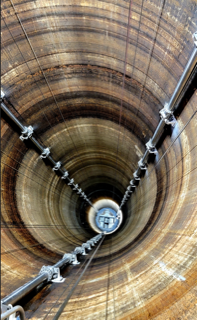
- 165,750 lbs of stainless steel
- 1,602 feet of stem machining (352 feet more than the height of the upper observation deck of the Empire State Building and 148 feet more than the tip of its antenna)
- Three equal-spaced stem drive assemblies can smoothly raise and lower cylinder gates
- The inner diameters of the upper stems allow the lower gate stem assemblies to slide (telescope) through them
- Stem assemblies can be supported laterally by stem guide collars and will attach to the concrete intake towers
- Lower stem sections can connect via close-fitting couplings and be held in place by tapered pins
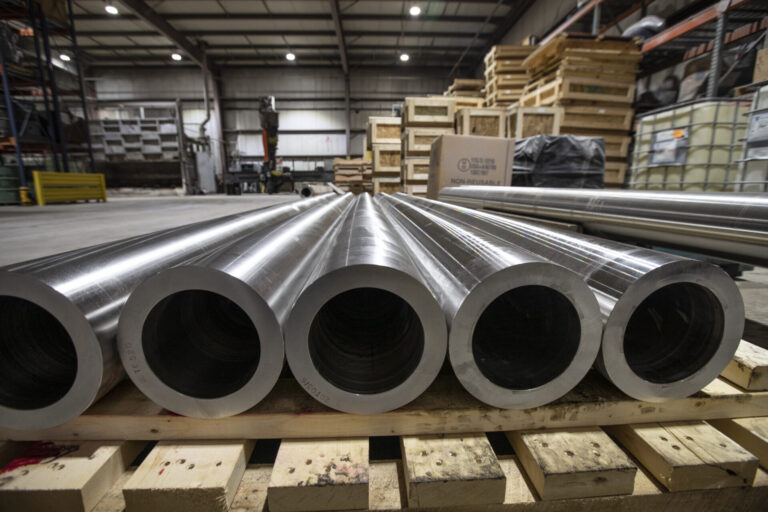
Centrifugal casting comes into focus
Unlike traditional manufacturing methods, centrifugal casting offers more flexibility in dealing with non-standard sizes. It’s known for providing customized tube sizes that precisely fit the project requirements.
“If the engineers had opted for a conventional approach, they would have been forced to order custom-sized tubes from a full mill run,” said Jenson. “It’s a choice that would have significantly increased the costs and the time required for the restoration.”
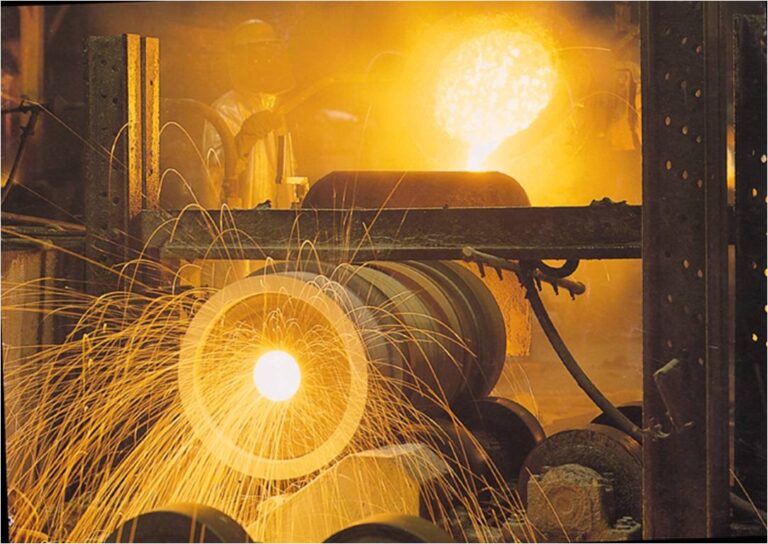
Global supply chain disruptions
The ongoing global supply chain disruptions brought on initially by the COVID-19 pandemic complicated matters further.
However, even though there were times when they got concerned, Jenson said Spuncast managed to avoid any significant disruptions due to supply issues.
“Our VP of production, Sean Evans, did a great job with that, really leveraging connections and proactively purchasing items in bulk, capitalizing on his knowledge of their availability and timing.”
The need for durable, customized material
The versatility of centrifugal castings to use a large variety of materials played a pivotal role in selecting materials for the stems.
Even though the engineers were well aware that the original stems were not in the best condition, the extent of the damage to the material used remained a mystery until they were extracted. A closer look showed significant deterioration but, surprisingly, was not as bad as they feared.
This was good news because they knew they could use a similar material to the original and be assured it would hold up for just as long, if not longer.
The decision was made to utilize a duplex material known for its pliability and one the Spuncast crew had used before in a project with similar environmental stresses.
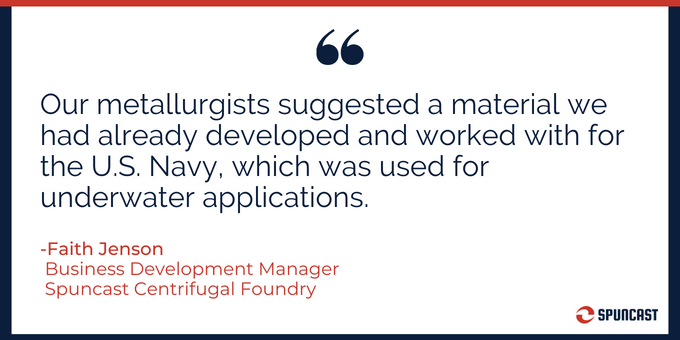
“Our metallurgists suggested a material we had already developed and worked with for the U.S. Navy, which was used for underwater applications,” Jenson said. “Using it based on its proven structural and mechanical success made sense.”
However, it still came with its own challenges, as the material, when produced at the long lengths required, tended to revert to its original form during machining. It made it difficult to maintain straightness.
To overcome this, Spuncast invested in a robust, automated hydraulic press for the shop floor and experimented with techniques to reduce the tube from bending. Jenson said it took several tries, but the engineers persevered until they produced the required length and straightness.
Collaborative problem-solving
Once these extended tubes were made at the foundry, the teams still faced maintaining that straightness after they left the Spuncast shop.
Keeping the tubes straight during fabrication was paramount. The solution lay in both teams working together to tackle the problem.
“Mark LeBoeuf, the owner of Amherst Tool, who has an extensive background in manufacturing, visited Spuncast and looked at how we were machining parts here to get an idea of what his team would be up against,” Jenson said. “There was lots of back and forth to pass on what we had learned during the process.”
This transparent communication and exchange of ideas proved invaluable, setting the stage for improved methods as they moved forward.
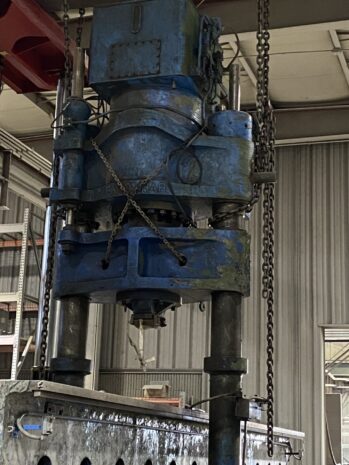
Impact on future projects
With year one of the five-year project completed, Spuncast’s involvement in the Hoover Dam Restoration exemplifies the power of collaboration, innovation, and adaptability.
Overcoming material challenges, supply chain disruptions, and size constraints, the Spuncast and Amherst Tool team played a pivotal role in ensuring this iconic American landmark’s continued strength and functionality.
Feedback from the Bureau of Reclamation has been overwhelmingly positive, with engineers expressing satisfaction with the end product and the efficiency of the entire operation. Jenson said they even took the time to visit the foundry and were impressed with the process.
As they set their sights on the second tower, the knowledge gained from overcoming the initial hurdles is a strong foundation for even better results.

Jenson believes the experience will be a valuable reference point for future projects. She said it highlighted their capabilities, competence, and ability to overcome challenges on a grand scale.
One thing is sure: as the dam stands proudly for another century, Spuncast’s contributions will remain an enduring testament to their commitment to excellence.

